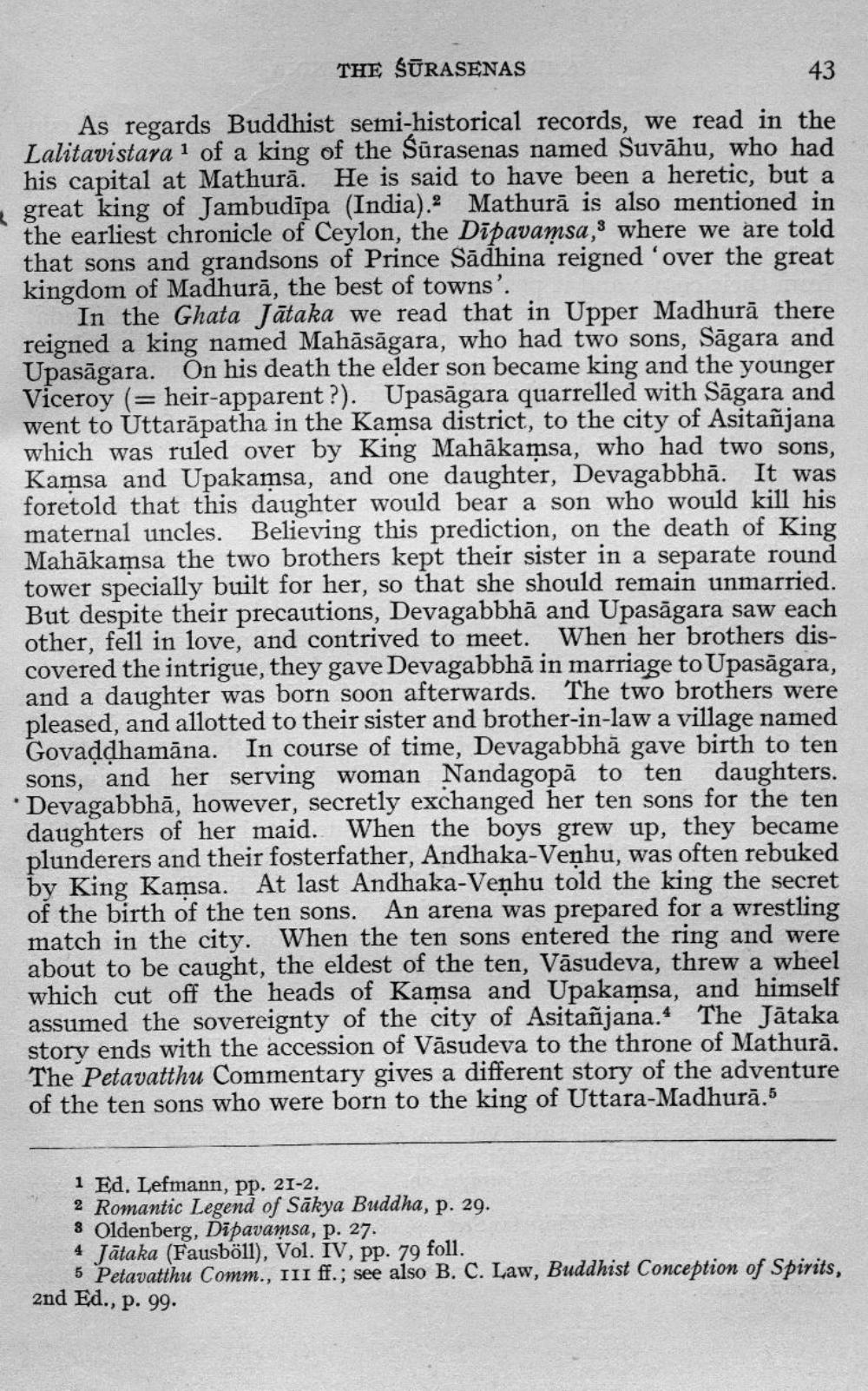________________
THE SŪRASENAS
43 As regards Buddhist semi-historical records, we read in the Lalitavistara 1 of a king of the Sūrasenas named Suvāhu, who had his capital at Mathurā. He is said to have been a heretic, but a great king of Jambudīpa (India).2 Mathurā is also mentioned in the earliest chronicle of Ceylon, the Dīpavamsa,' where we are told that sons and grandsons of Prince Sādhina reigned 'over the great kingdom of Madhurā, the best of towns'.
In the Ghata Jātaka we read that in Upper Madhurā there reigned a king named Mahāsāgara, who had two sons, Sāgara and Upasāgara. On his death the elder son became king and the younger Viceroy (= heir-apparent?). Upasāgara quarrelled with Sāgara and went to Uttarāpatha in the Kamsa district, to the city of Asitañjana which was ruled over by King Mahākamsa, who had two sons, Kamsa and Upakamsa, and one daughter, Devagabbhā. It was foretold that this daughter would bear a son who would kill his maternal uncles. Believing this prediction, on the death of King Mahākamsa the two brothers kept their sister in a separate round tower specially built for her, so that she should remain unmarried. But despite their precautions, Devagabbhā and Upasāgara saw each other, fell in love, and contrived to meet. When her brothers discovered the intrigue, they gave Devagabbhā in marriage to Upasāgara, and a daughter was born soon afterwards. The two brothers were pleased, and allotted to their sister and brother-in-law a village named Govaddhamāna. In course of time, Devagabbhā gave birth to ten sons, and her serving woman Nandagopā to ten daughters. Devagabbhā, however, secretly exchanged her ten sons for the ten daughters of her maid. When the boys grew up, they became plunderers and their fosterfather, Andhaka-Venhu, was often rebuked by King Kamsa. At last Andhaka-Veņhu told the king the secret of the birth of the ten sons. An arena was prepared for a wrestling match in the city. When the ten sons entered the ring and were about to be caught, the eldest of the ten, Vasudeva, threw a wheel which cut off the heads of Kamsa and Upakamsa, and himself assumed the sovereignty of the city of Asitañjana.4 The Jätaka story ends with the accession of Vasudeva to the throne of Mathurā. The Petavatthu Commentary gives a different story of the adventure of the ten sons who were born to the king of Uttara-Madhurā.5
1 Ed. Lefmann, pp. 21-2. 2 Romantic Legend of Sākya Buddha, p. 29. 8 Oldenberg, Dipavamsa, p. 27. 4 Jataka (Fausböll), Vol. IV, pp. 79 foll.
5 Petavatthu Comm., 111 ff.; see also B. C. Law, Buddhist Conception of Spirits, 2nd Ed., p. 99.




